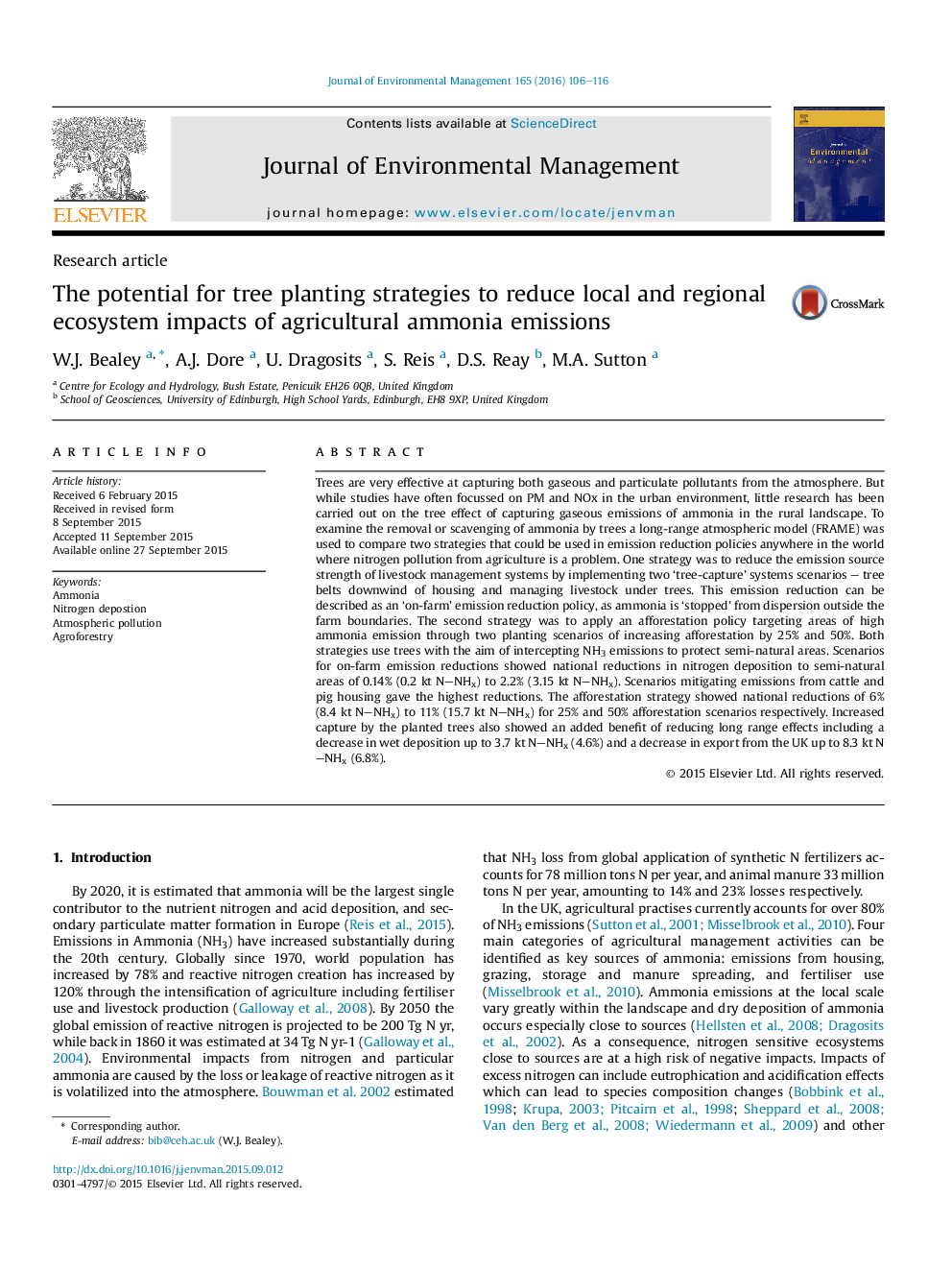| Article ID | Journal | Published Year | Pages | File Type |
|---|---|---|---|---|
| 1055479 | Journal of Environmental Management | 2016 | 11 Pages |
•Two strategies were compared for reducing ammonia emissions from agriculture.•A national atmospheric model (FRAME) was run to show N deposition reductions.•Both strategies demonstrated tree capture of ammonia to protect semi-natural areas.•Trees promote local dry deposition, and so reduce long-range transboundary pollution.•National reductions in nitrogen deposition ranged from 0.14% to 6.5%.
Trees are very effective at capturing both gaseous and particulate pollutants from the atmosphere. But while studies have often focussed on PM and NOx in the urban environment, little research has been carried out on the tree effect of capturing gaseous emissions of ammonia in the rural landscape. To examine the removal or scavenging of ammonia by trees a long-range atmospheric model (FRAME) was used to compare two strategies that could be used in emission reduction policies anywhere in the world where nitrogen pollution from agriculture is a problem. One strategy was to reduce the emission source strength of livestock management systems by implementing two ‘tree-capture’ systems scenarios – tree belts downwind of housing and managing livestock under trees. This emission reduction can be described as an ‘on-farm’ emission reduction policy, as ammonia is ‘stopped’ from dispersion outside the farm boundaries. The second strategy was to apply an afforestation policy targeting areas of high ammonia emission through two planting scenarios of increasing afforestation by 25% and 50%. Both strategies use trees with the aim of intercepting NH3 emissions to protect semi-natural areas. Scenarios for on-farm emission reductions showed national reductions in nitrogen deposition to semi-natural areas of 0.14% (0.2 kt N–NHx) to 2.2% (3.15 kt N–NHx). Scenarios mitigating emissions from cattle and pig housing gave the highest reductions. The afforestation strategy showed national reductions of 6% (8.4 kt N–NHx) to 11% (15.7 kt N–NHx) for 25% and 50% afforestation scenarios respectively. Increased capture by the planted trees also showed an added benefit of reducing long range effects including a decrease in wet deposition up to 3.7 kt N–NHx (4.6%) and a decrease in export from the UK up to 8.3 kt N–NHx (6.8%).
